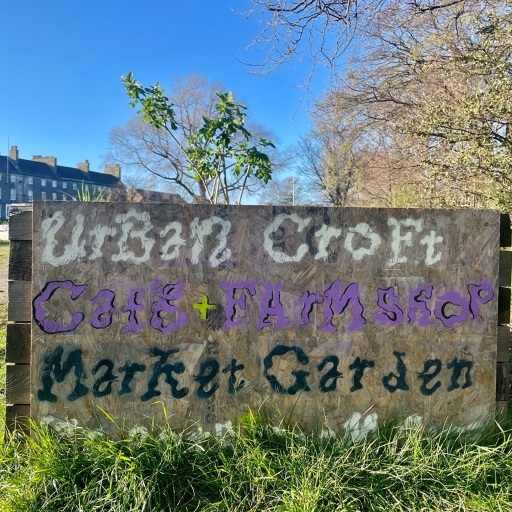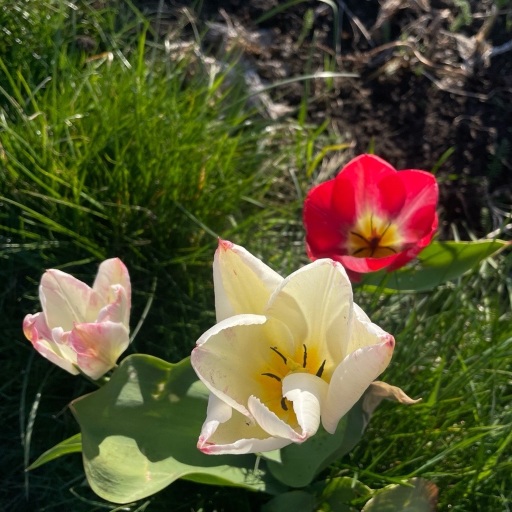On Common Ground: Leith Community Croft
Leith Community Croft is a small patch of green space, but it's also so much more. Lauren Cameron looks at how the Croft – and the people growing on it – are rethinking food, community and what it means to belong
Tucked away in a quiet corner of Leith Links, just a few paces from the city’s hum, lies a space that feels like it slipped through the cracks of urban planning – and decided to root itself anyway. On this peaceful patch of green, the buzz of traffic gives way to birdsong, the rustle of leaves, and the low murmur of people working the earth.
This is the Leith Community Croft, and while it may look like a garden, it’s far more than that. Once dismissed as derelict Common Good land, the site has blossomed into a vibrant, living model for how urban life might be done differently. Yes, it’s a space to grow food, but also to grow community, resilience, knowledge, and a sense of belonging that cities often forget to make room for.
Run by grassroots social enterprise Earth in Common, the Croft is part food-growing space, part outdoor classroom, part sanctuary. In a time when loneliness, rising costs, and climate anxiety shape daily life, this community-run croft offers something quietly radical: a chance to reconnect – with the land, with others, and with ourselves.
Urban crofting
So, what exactly is a croft?
Traditionally, a ‘croft’ refers to a small-scale farm, often in the Highlands, rooted in community land use. Think shared pasture, local produce, and a deep respect for the land. Earth in Common has taken that idea and flipped it to fit modern city life. The result? A collectively managed green space, where growing is about people as much as plants.
“We started coming here in 2020 – basically when lockdown happened," recalls Tom Everett, a grower at the Croft who lives nearby. "We live in a small flat, no garden, and it became a sort of haven."
During the long months of lockdown, the Croft became a sanctuary for many. For Everett, his partner Allison, and their two young daughters, it quickly transformed from a nearby green space into something much more. Allison describes how the space became a sort of “ forest school” for them. "They know all the plants now. They know what they can eat. They were climbing trees, making bows and arrows... it became their world."
The pandemic exposed many cracks in urban living; social isolation, a disconnection from nature, an appetite for connection and community. The Croft is not just a garden, it’s an answer to the question: What kind of city do we want to grow?

Image: Lauren Cameron.
Food as a common thread
Food is often where community begins. It’s how we nurture each other, pass on culture, and mark celebrations. At the Croft, food-growing is both practical and poetic: a way to localise food systems, reduce environmental impact, and build self-sufficiency, but also a way to bring people around a shared table and create a community.
Unlike traditional allotments, the Croft isn’t divided into individual plots behind locked gates. Instead, it’s built around dùthchas – a Scottish Gaelic concept that we belong to the land, not the other way around. Plots are cared for by groups: families, friends, new neighbours. By re-establishing this sense of belonging amongst city dwellers, they hope to connect people to the land and nature – all while nurturing Gaelic heritage and indigenous langauge.
Tom Watson, who’s been part of the Croft for over a decade, knows this well. “I'm self-employed, so I do it other places too now,” he says of his gardening work. “But when I'm doing it here, it doesn't feel like work 'cause it's such a nice environment.”
For Watson, it’s not just the space – it’s the people. “I work for another charity that sets up community gardens, and we get kids who are having trouble attending school to come and help us out. And they tend to be small [gardens], like back green sizes. But again, it's just great people. People need a little bit of land to dig and just do their own thing on.”
From soil to soul
The Croft cultivates a fluid, seasonal community, shaped by need, weather, and time. It hosts workshops, dinner parties, even birthdays. “It’s a mutable space,” says Everett. “It’s our garden space.” That mutability is key. The Croft shifts with the people who use it; a classroom one day, a quiet retreat the next. This is dùthchas in action: not rigid tradition, but a living, breathing relationship with land and people.
The benefits are tangible. Studies show that just two hours a week in green space can significantly improve mental and physical health; lowering stress, improving mood, and reducing loneliness. At the Leith Community Croft, these benefits come naturally. But perhaps most powerfully, it’s the feeling of being part of something. In a city that can often feel anonymous, even isolating, growing together gives people a sense of belonging, not just to the land, but to each other. In a world where it’s easy to feel disconnected – even in a city full of people – it offers people a sense of belonging, not just to the land, but to each other.
Anna Cradden, another regular at the Croft, reflects on her childhood in Edinburgh and summers spent visiting her grandmother’s small village in Germany. She remembers a time when food was truly homegrown, when her grandmother grew almost everything she ate, feeding the extended family from the same patch of soil. Returning recently, she noticed the allotments there sat empty. "It made me a bit sad, actually."

Image: Lauren Cameron.
Keep digging
That sense of disconnection – from land, food, community – is something many feel, even if they don’t have the words for it. It’s a kind of rootlessness that runs deep, especially in a city constantly in flux. At the Croft, the antidote is simple: show up. Dig a little. Plant something. No pressure, no prerequisites.
“You can just come and do something without having to be responsible for it,” Cradden says. “Even if you don’t come back for a year, it’s fine. You’ve done your bit. And that’s nice.” But beneath the warmth and informality lies something deeply political. The Croft is a form of resistance: to isolation, to industrialised food systems, to cultural amnesia. In Leith, a historically working-class, proudly diverse part of Edinburgh, access to land is access to power.
For Cradden, that connection is deeply personal. Reconnecting with the land is a way of understanding who we are and how we belong. “I think there's something really important about growing things that helps you to understand the place you're in. To feel like you know the place you're in and you're a part of the territory that you're on. You're part of the ecosystem there.
“Being connected to the actual land that you walk on and working it and growing things gives you a feeling of security… Whoever's here needs to be connecting with the land and taking care of it.” Watson echoes this sentiment: “People need a little bit of land to dig and just do their own thing. That’s the big difference.”
That’s exactly what’s happening at Leith Community Croft, and Earth in Common is not stopping there. Despite funding gaps, vandalism, and the usual challenges of grassroots work, Earth in Common has flourished. Their work has attracted national attention, including partnerships with major initiatives like the Wellcome Trust’s research on Scotland’s Good Food Nation Act and the National Lottery-backed Nature Neighbourhoods Project.
The Croft is only the first of what they hope will become a network of urban crofts across Scotland, empowering communities to take over neglected urban spaces and bring them to life. More than just a garden, the Leith Community Croft is a glimpse into a better future; one that’s greener, fairer, and rooted in community. And it’s growing.
Leith Community Croft, 4a John's Pl, Leith, Edinburgh
Lauren Cameron (she/her) is a Highlands-born, Edinburgh-based journalist and podcaster who writes about people, place, and everything in between.
This article is from issue two of GNAW, our new Scottish food and drink magazine. Free copies are available in venues across Scotland, or read the full thing via Issuu. Follow GNAW on Instagram @gnawmag
